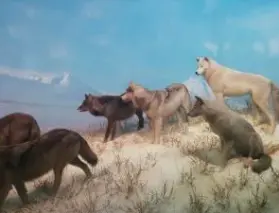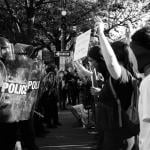 For four days, I didn’t eat. I lived on a desert mountain peak, sleeping under the stars. On the fourth night, I held a vigil and was overwhelmed with its power.
For four days, I didn’t eat. I lived on a desert mountain peak, sleeping under the stars. On the fourth night, I held a vigil and was overwhelmed with its power.
When I came back home, everyone wanted to know how it was. I should have said, “Ask me in a year. I’ll know then.” And in a way, that’s the truth. Because the hardest part still lies ahead of me.
I did my vision fast with the School of Lost Borders, an organization of wilderness guides that’s been leading people to fast in the Inyo Mountains and elsewhere for 40 years.
This ceremony is a fasting practice that draws on the archetypal rite of passage from across the world, and is particularly indebted to Native American traditions, which the school has honored since its foundation.
According to ethnographer Arnold van Gennep, there are three parts to any rite of passage: separation, liminality, incorporation.
Separation / Severance – A process by which an individual leaves, or “dies to,” their previous life, status, or identity.
Liminality / Threshold – A phase when the individual has dissolved their previous identity, but has not yet been reborn to their new selves.
Incorporation / Integration – The process of returning to one’s community to take on the new identity and serve their people with the gifts and qualities they have gained.
I believe these three phases of a rite of passage can also be generalized to the three phases of all spiritual practice.
Whether you sit down on a meditation cushion, enter into a church, form a ritual circle in the soil, or consume a bundle of magic mushrooms, the first act of any spiritual practice is about severance—crossing the boundary from the profane (or mundane) world into the sacred world.
The second phase is the spiritual part itself: the altered state. This is the liminal zone where you are not entirely yourself. Here you may lose all sense of self and become something other—you identify with your breath, with a deity, or with the great All.
The third phase is the come-down, the return. This is the least exciting and most important part of any spiritual work. And this is where a lot of spiritual practice falls short.
Scott Eberle, one of the guides leading my fast said: “Of the three phases of a rite of passage—severance, threshold and incorporation—the hardest to navigate, by far, is incorporation.”
Betsy Perluss, the other guide on the fast, said incorporation is where “the rubber meets the road.” It’s where the visions a person receives, the insights, gifts, and powers they glimpsed are actualized in their lives. This most important phase of spiritual work is also the most overlooked. “Bliss junkie,” is a catchphrase emblematic of this neglect.
In the spiritual or psychedelic world, a bliss junkie is someone who has an intense, ecstatic spiritual experience and then rushes on to the next high. They neglect, or completely ignore, the third phase of the process: integration.
Spiritual experiences give us glimpses of what our life could be like. But it requires real work to bring that vision to fruition in our lives.
Neglecting incorporation isn’t only a phenomenon in the psychedelic world. With all spiritual practices, we run the risk of separating the spiritual state and its insights from the rest of our lives.
Meditation, for example, is often thought of as something that starts and stops on our meditation cushions. But in his talks on meditation, Sam Harris repeatedly emphasizes that meditation shouldn’t end when your timer goes off. To integrate the meditative state is to bring it out into the world and make it, increasingly, the default state from which we act and exist. Incorporation is about creating a new baseline. And that takes work.
The peak experience, the liminal or altered state, isn’t the thing that changes us. Change comes when we return to our regular lives and, to borrow a mantra from the School of Lost Borders, “perform the vision on earth for the people to see.”
How an insight, vision, or revelation manifests in a person’s life may be as unique as the individual who experienced it. But the key to all incorporation is action.
There is a Native American story called the Legend of Jumping Mouse, offered by the School of Lost Borders handbook, that I think serves as an excellent allegory for the journey of incorporation.
In it, a mouse yearns to see the sacred mountains. He encounters a magic frog that tells him, “Bend down as low as you can, then jump as high as you can.”
The mouse jumps, and at the top of his leap, glimpses the sacred mountains in the distance. But as he descends, he falls into the dark, cold river. He tumbles and turns and barely gets to shore.
“You tricked me!” says the mouse, gasping for breath and dripping wet.
“Hold on, you’re alright,” says the frog. “Now tell me, what did you see?”
“I saw—I saw, the sacred mountains.”
“And something else: you now have a new name. Jumping Mouse.”
Jumping Mouse goes back to the world of mice but is ridiculed and scorned for his story. Haunted by the memory of the sacred mountains, he goes on a perilous inward journey to find them. Before reaching his destination, Jumping Mouse gives away his two eyes so that his people may be healed.
The goal of incorporation is to create a new baseline from which to live. The key to doing that is taking action—performing your vision on earth for the people to see.
The key to action, however, is sacrifice. And sacrifice requires that we walk straight into the mouth of fear. This is where I—and many others—often stop short.
After having our hearts opened by a spiritual practice, after seeing a grand vision for our lives, the power of the experience inevitably fades away. As it fades, it is replaced by fear. We become afraid of the implications of our insight or vision. We become afraid of walking the path laid out for us, terrified of ridicule and scorn.
“What if my friends think I’m crazy?” (They might.)
We become afraid of facing another human being with our heart fully open, because opening ourselves fully to another person means opening ourselves to pain.
As the power of the experience fades, we must replace the power of the visionary spiritual state with our own, or else we will contract and recede into our protective ego-shell—the defensive mask we’ve built up since childhood to preserve ourselves from the pain of pure openness.
Integrating a new state of being requires the hard work of action. Action requires sacrifice. Sacrifice requires pain, and even death, for the sake of what is true within you.
Sacrifice might take many forms. We may be called to sacrifice our clinging to a desire or outcome. We may have to sacrifice a core belief about ourselves or the world. Sometimes we may even have to give up the very notion of our “self”—the person or entity we thought we were—so that we can step forward, reborn, into a new identity capable of serving our people in the way we are called.
This process of dying to our old self is the essence of true transformation. It is also one of the hardest things to do. Although this kind of death is symbolic, it’s no less frightening. Our ego, our carefully crafted identity, fears dissolution about as much as our physical body.
But this is the crucial juncture. Are we willing to let go of our old selves and rise into our calling? Are we willing to sacrifice, to endure pain—give up our very eyes—for the good of our people? Or do we turn and run back up the mountain to live in the clouds? Or run the other way: to curl up in our old ego-shell?
This is not an easy choice, and it’s the reason incorporation is the final and most difficult stage of any rite of passage, ritual, or spiritual practice. Like a painful, bloody, risky birth-canal, incorporation is the passage that leads into the real world.
During my mountaintop vigil, I saw amazing things. My consciousness blew open across the desert and I felt an immense power course through my body. But the question remains: how will I incorporate what I experienced?
Will I be able to walk into my fears? Die to my old self? Live out the vision for my people to see?
Ask me in a year, and maybe then I’ll know.
Subscribe to The Spiritual Naturalist Society
Learn about Membership in the Spiritual Naturalist Society
__________
The Spiritual Naturalist Society works to spread awareness of spiritual naturalism as a way of life, develop its thought and practice, and help bring together like-minded practitioners in fellowship.
SNS strives to include diverse voices within the spectrum of naturalistic spirituality. Authors will vary in their opinions, terms, and outlook. The views of no single author therefore necessarily reflect those of all Spiritual Naturalists or of SNS.
__________












